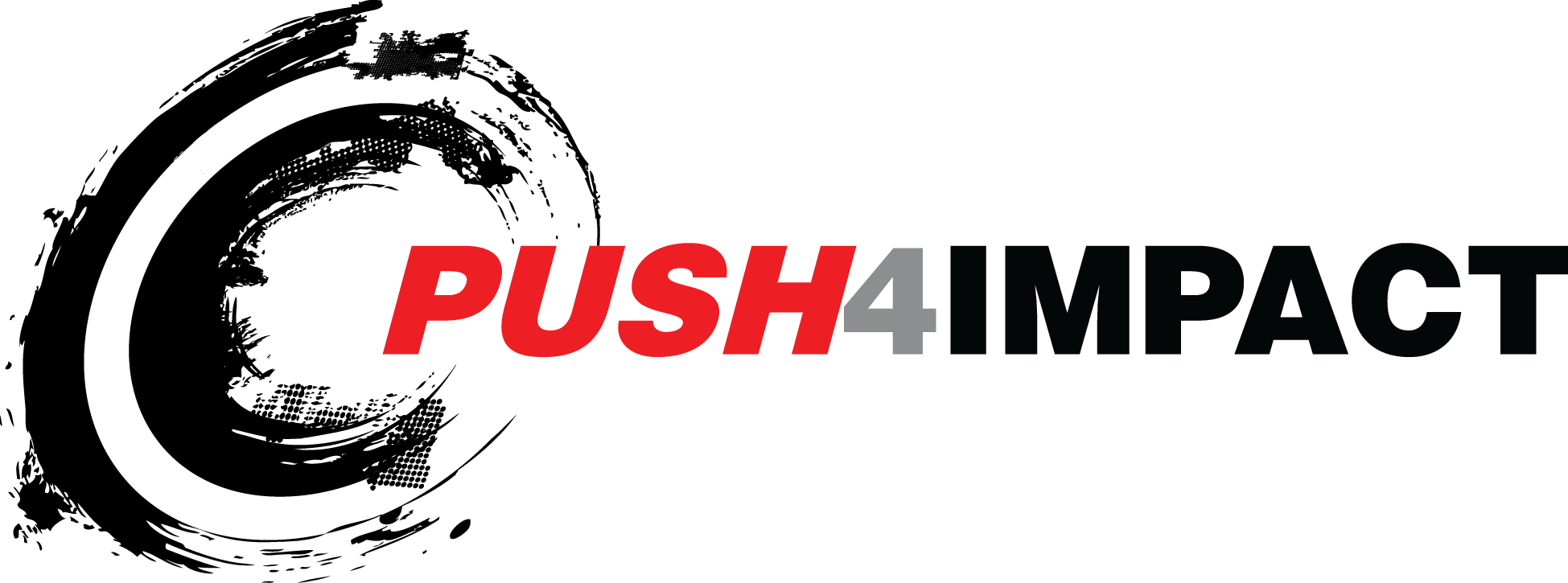Just as exciting to play as to watch!
Invented in Winnipeg in 1977, Wheelchair Rugby has grown to be one of the most popular wheelchair sports. Wheelchairs race and collide as the athletes pass and catch the ball and ultimately carry or wheel the ball across the line. Spectators of this highly competitive game are in for a treat, and the athletes themselves have a blast as well!
The sport has been gaining more and more traction and media attention thanks to Prince Harry’s Invictus Games, the growing popularity of the Paralympics, and the Oscar-nominated documentary Murderball.
This fast-paced high energy team sport promotes inclusivity, empowerment, teamwork and excellence.
Rules
Push4Impact games will be played with a modified wheelchair rugby ruleset. Below are the Push4Impact rules:
Game time:
- 20 minute running time.
Start of the Game:
- Teams will choose 1 center each to take the tip-off.
- The two players chosen for the tip-off will meet at center court and position themselves laterally to the center line.
- The referee will blow the whistle and toss the ball.
- The centers must tap the ball to a teammate (the center is not permitted to catch the ball before a teammate has touched the ball).
Scoring:
- The player scoring a Try must have the ball on their lap, in their hands or held against their wheel prior to crossing the Try Line.
- Two wheels must cross the Try Line for the Try to count.
- The two wheels for a successful Try can be any combination of the front castor wheels (small wheels) or the pushing wheels (big wheels).
- Each Try is worth one point.
Playing the Game:
- After each Try, the team that was on defense will become the new offense.
- After a Try is scored, the new offense will inbound the ball from behind their Try Line.
- Once a Try has been scored, no contact between chairs is permitted by either team.
- The referee will place the ball on the lap of the inbounder and blow the whistle – this also signals that chair contact is legal.
- The inbounder will have 10 seconds to pass the ball in to a teammate.
- Once the ball is in, the offence has 12 seconds to get the ball past half court. If they are not successful, the ball will be turned over.
- Once the ball has crossed half court, the offense cannot return the ball to the back court or be the first to touch the ball if it rolls into the backcourt.
- Each team will get 2 time outs per half, lasting 30 seconds. A time out can only be called when your team is in possession of the ball. The 2 uses of time out include calling it during live play to save a possession or call it during a dead ball to talk strategy.
Principles of Contact:
- Chair to chair contact is legal anywhere in front of the axle of the big wheels.
- Body to body contact is not legal – but slight touches will not be called as a penalty.
– A player who is called for a penalty will need to sit off at midcourt for 30 seconds or until a Try is scored.
Playing the Ball (Defense):
- Playing the ball on your opponent’s lap is legal – provided you don’t make contact with their arms or body while attempting to steal the ball.
- Players not in possession of the ball are not permitted to leave the court between the posts at either end of the Try
Line. In the case that someone does, while defending the ball carrier, a Penalty Try will be awarded. - There is a box taped out in front of your Try line. This is called ‘the key’. Only 3 defenders are permitted in the key
at any time. If more than 3 defenders are in the key a 15 second penalty will be issued.
Carrying the Ball (Offense):
- A player in possession of the ball must pass or dribble every 10 seconds.
- If a player in possession of the ball touches any part of the of the court boundary, they are considered out of bounds and the ball will be turned over.
- Players not in possession of the ball are not permitted to leave the court between the posts at either end of the Try Line. In the case that someone does, while on offense, a turnover will be called.
- There is a box taped out in front of your Try Line. This is called ‘the key’. No offensive player is permitted in the key for more than 10 seconds. If an offensive player is in the key longer than 10 seconds, the ball will be turned over.
Concluding the Game:
- The team with the highest score at the end of 20 minutes of play will be declared the winner and receive 2 points for a victory.
- If there is a tie at the end of 20 minutes, 1 point will be awarded to each team.

